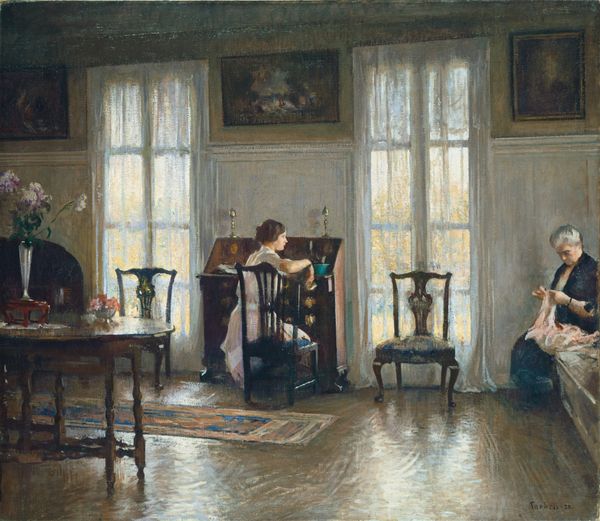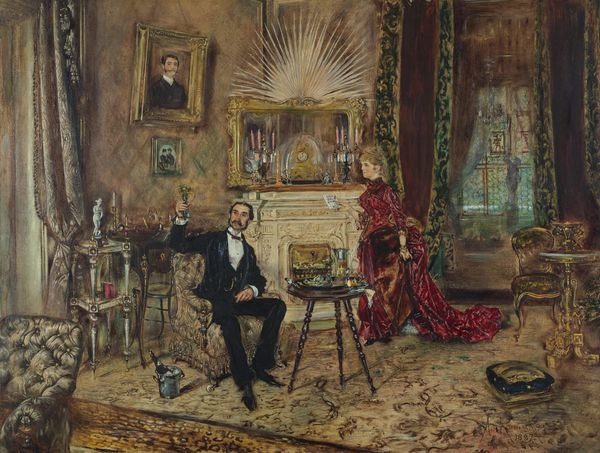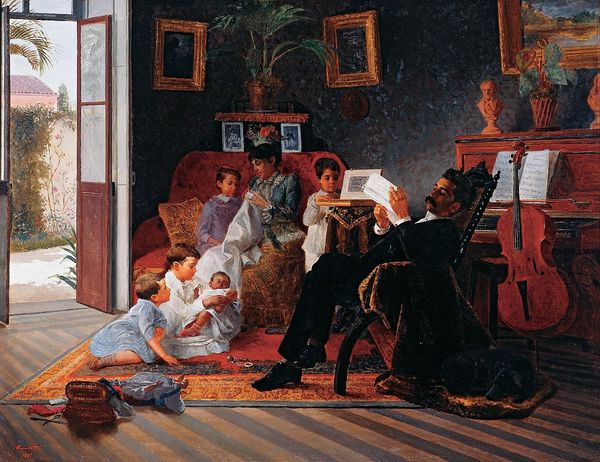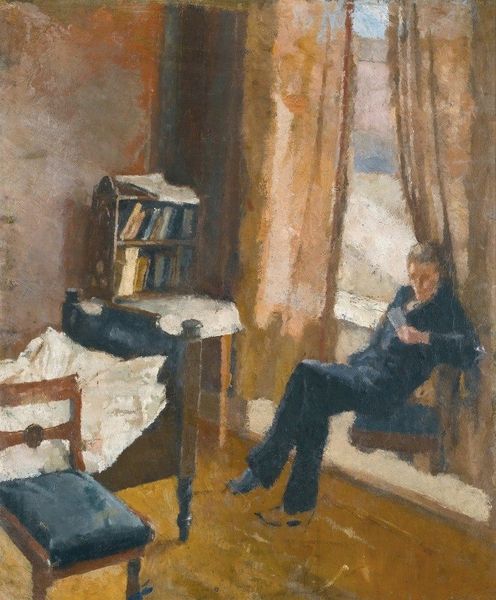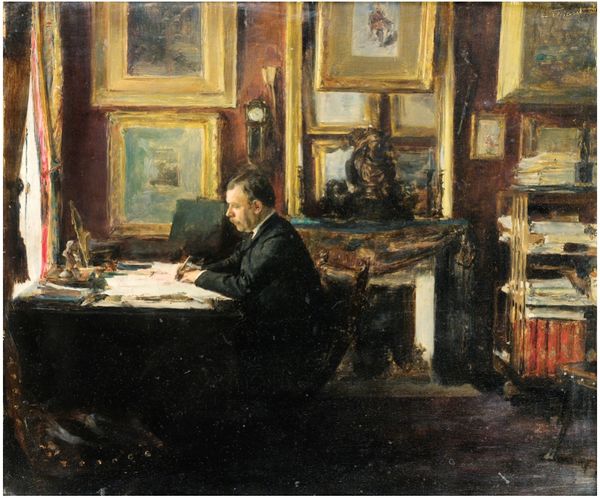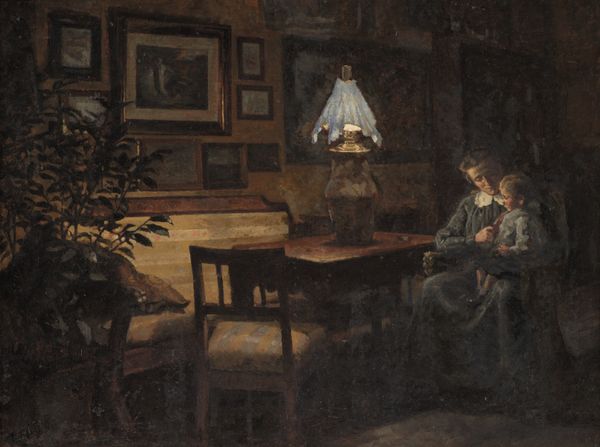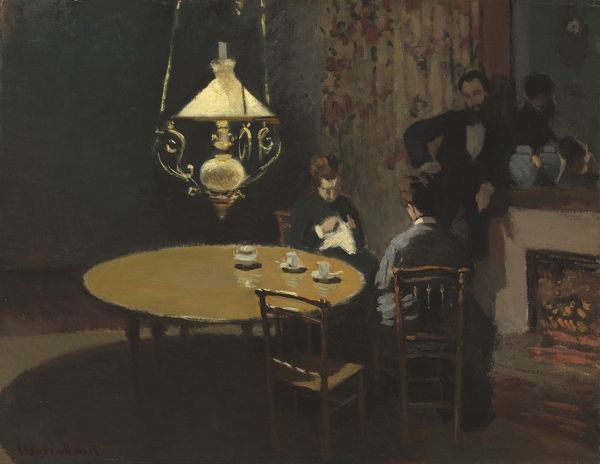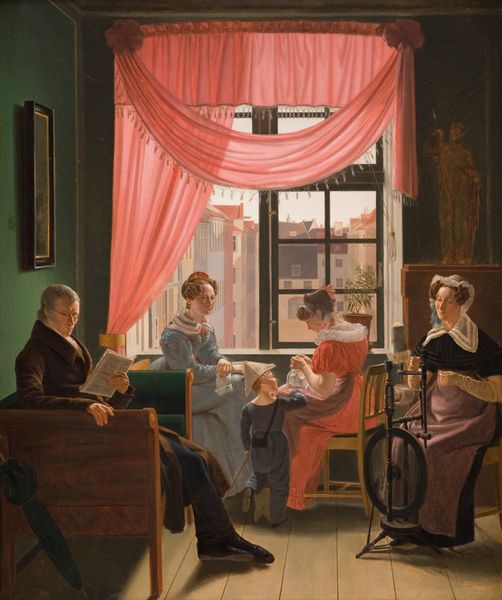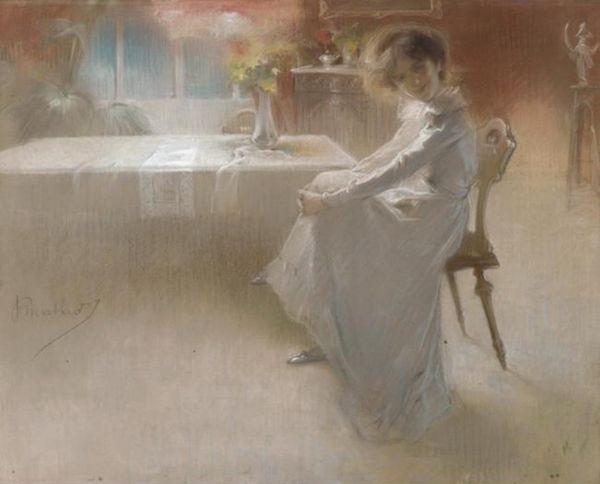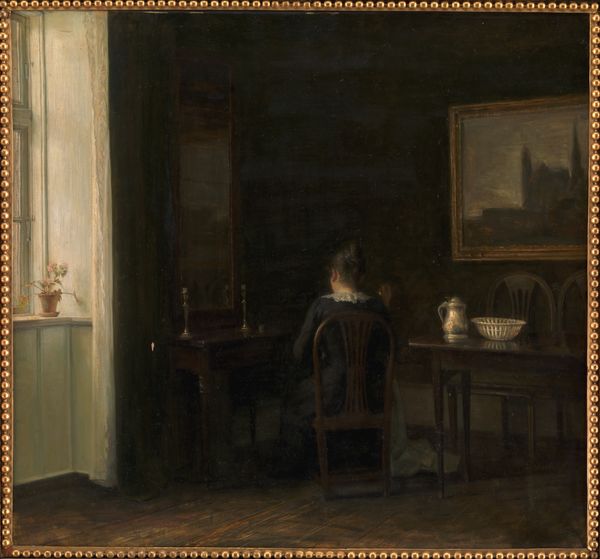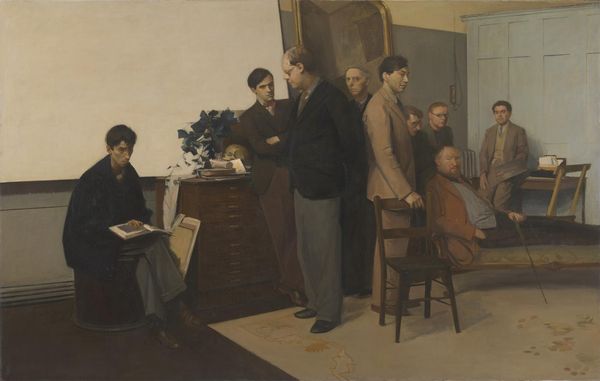
Dimensions: support: 1016 x 1486 mm
Copyright: CC-BY-NC-ND 4.0 DEED, Photo: Tate
Curator: Let’s turn our attention to Sir William Quiller Orchardson’s “Her Mother’s Voice,” residing here at the Tate. Editor: There’s a melancholic stillness to this domestic scene. The scale emphasizes the distance between the figures; it is almost claustrophobic. Curator: Orchardson masterfully employs composition to create narrative tension. Note how the man is isolated in the foreground, set apart from the musical couple. Editor: Absolutely. This separation speaks volumes about Victorian social dynamics, particularly the silent suffering often endured by men within patriarchal structures. His emotional labor is dismissed in favor of superficial entertainment. Curator: Indeed, the muted palette and formal arrangement underscore this sense of restrained emotion. The architecture and interior decoration also denote a bourgeois setting. Editor: It also reads as a critique of the limited roles assigned to women, singing for their supper in that gilded cage. Curator: I find that Orchardson captured a poignant moment. Editor: A somber reflection on the silent battles fought within the confines of Victorian society, wouldn't you agree?
Comments
tate 8 months ago
⋮
http://www.tate.org.uk/art/artworks/orchardson-her-mothers-voice-n01521
Join the conversation
Join millions of artists and users on Artera today and experience the ultimate creative platform.
tate 8 months ago
⋮
The widower in the foreground looks up as he thinks for a moment that he hears his late wife's voice as his daughter, whom he cannot see, begins to sing. The picture was exhibited with lines from Tennyson's poem Break, break, break: But O for the touch of a vanish'd hand/ And the sound of a voice that is still. The poetic quote underscores the deeply sentimental nature of this painting. Gallery label, August 2004

